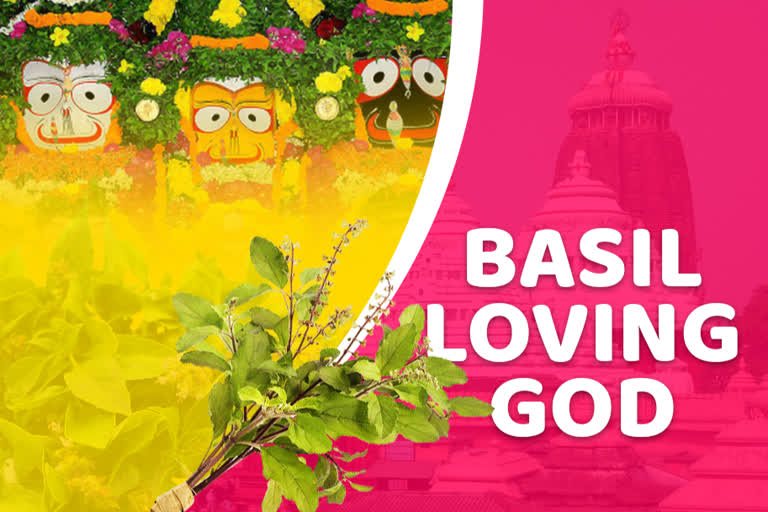Puri (Odisha): Devotees from across the nation and abroad throng the Lord Jagannath's Temple in Puri, especially at the time of Rath Yatra. Lord Jagannath, Balabhadra and their sister Subhadra are the three presiding deities of the Puri shrine which attract millions of devotees to the sacred place to get blessings.
However, the majority of the devotees may not be aware of the importance of basil (tulsi) leaves that are offered to Lord Jagannath, which is an inseparable part of the worship. It is believed that Lord Jagannath is fond of basil leaves and has a special liking for it, which makes it the most important offering.
Not only the basil leaves are used for dressing, decorating and making ornaments for the idol, it is also used in the Mahaprasad (cooked rice) which is prepared for the devotees. Religious experts say that the presence of basil leaves are a must for all the prayers and rituals, and hence Lord Jagannath is called as 'Basil Loving God'.
Before the Rath Yatra commences, the three deities are made to take bath in 108 buckets of holy water on the day of Snana Purnima. According to the rituals, the idols suffer from fever and they are kept in Anasara Ghar(sick chamber) for treatment. It is only during that period of time when Lord Jagannath is not offered Basil leaves.
During the Rath Yatra, the deities wear a special floral crown called 'tahia' and a helmet called 'topar' which is prepared with the help of basil leaves. Six-feet-crown is made for the Lord Jagannath which is prepared from various species of trees and plants in which basil leaves are used in ample quantity.
READ: HC declines to interfere in Puri Rath Yatra at this stage
How are the basil leaves arranged?
Since basil leaves are required in almost all religious functions of Lord Jagannath, it is arranged from a garden 'Koili Baikuntha Niladri Upabana' present inside the temple premises. At times when leaves fall short, tulsi leaves are arranged from different hermitages in the temple town to meet the requirement.
In addition to that, there is a special garden for basil leaves in Jagannath Ballav Mutt from where the leaves are supplied to the temple on special occasions. With its requirement in every ritual and ceremonies, tulsi leaves have become an integral part of the worship and prayers of Lord Jagannath.
READ: Uncertainty looms over Rath Yatra 2020 amid spike in COVID-19 cases



